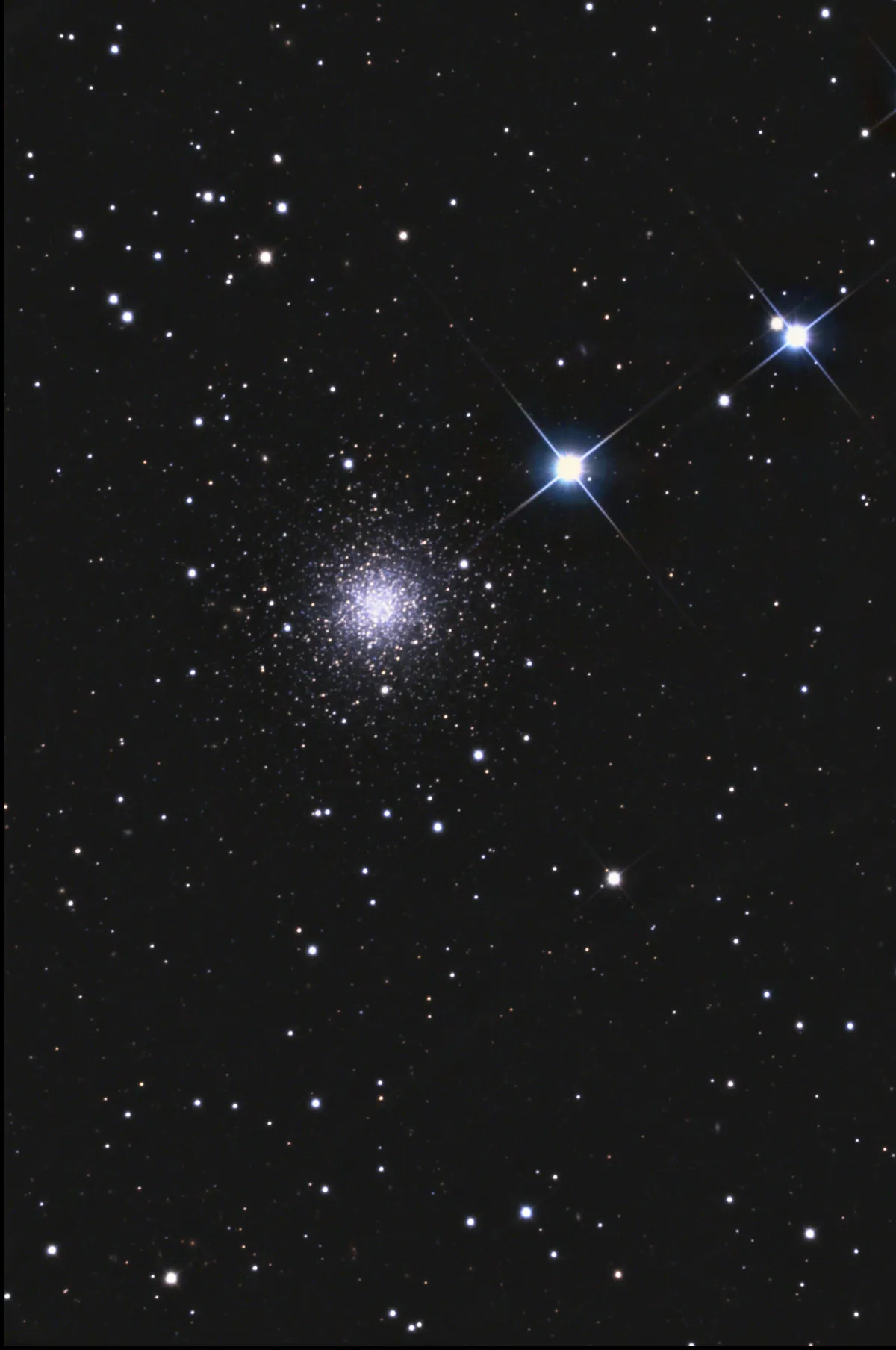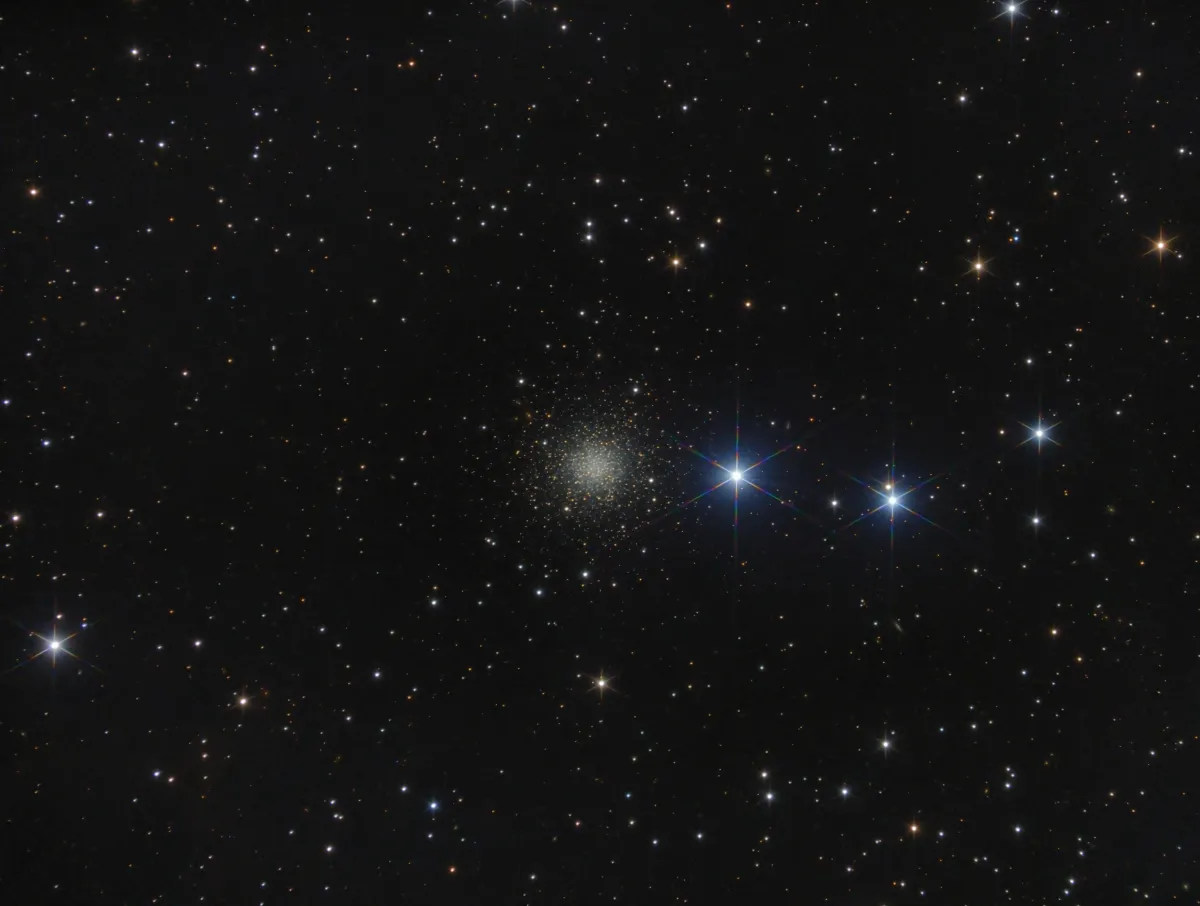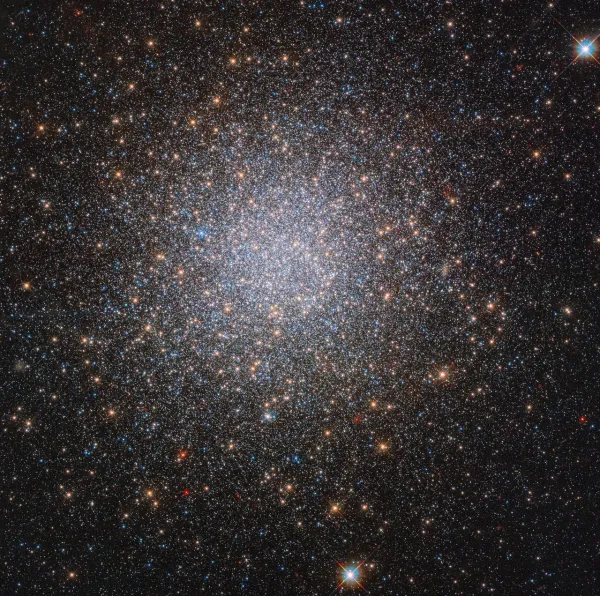Intergalactic Wanderer (NGC 2419)


History
This globular cluster was discovered by William Herschel on 31 December 1788 with his self-made 18.7 inch f/12.8 reflecting telescope in Slough, England. As he could not resolve it into stars he cataloged it as I 218 (class I = bright nebulae) and described it as follows: «considerably bright, round, very gradually much brighter in the middle, about 3' diameter.» [465] His son John using a 18.3 inch telescope in 1833 listed the cluster as number 457, but could not recognize its true nature either. [466] William Parsons, the 3rd Earl of Rosse, using his famous six feet wide reflector «Leviathan of Parsonstown» wrote in 1861: «Edge filamentous; round; looks like a globular cluster.» [486]
The first to prove the nature of NGC 2419 as a globular cluster was C. O. Lampland on photographs made with the 40 inch reflector at Lowell observatory. [604] In the same year Harlow Shapley estimated the distance of this globular cluster and concluded that it is one of the most distant globular clusters. [604] He later nicknamed the cluster to «Intergalactic Tramp». Robert Burnham Jr. first used the alternative name «Intergalactic Wanderer» in his «Celestial Handbook» published in 1978. [4]
Physical Properties

Measurements by the Hubble Space Telescope and the Gaia Space Telescope showed that NGC 2419 orbits the centre of the Milky Way in a nearly polar orbit of about 53 kpc to 98 kpc (173'000 to 320'000 light years) and takes about four billion years to do so. This and the common sense of rotation around the Milky Way make it very likely that this globular cluster once belonged to the Sagittarius dwarf elliptical galaxy (Sgr dSph, Sag DEG). [302]
Usually, stars within globular clusters show very similar properties, such as age and metal content (any element heavier than helium in astronomy), since the stars formed at the same time. It was also assumed that this similarity would hold true for the helium content of each star within the globular cluster. Studies of NGC 2419 using the Hubble Space Telescope showed that this assumption is not always true. This globular cluster features two distinct populations of red giants, one of which is unusually rich in helium. Other elements such as B. nitrogen also show strong differences in the individual stars. This population of helium-rich stars was found primarily at the centre of the globular cluster, and they also appear to rotate differently from the other population. This raises questions as to whether both stellar populations formed together or are of different origins. [301]
| Designation | NGC 2419 |
| Type | GCL (II) |
| Right Ascension (J2000.0) | 07h 38m 08.5s |
| Declination (J2000.0) | +38° 52' 57" |
| Diameter | 4.6 arcmin |
| Visual magnitude | 10.3 mag |
| Metric Distance | 82.600 kpc |
| Dreyer Description | pB, pL, lE 90°, vgbM, * 7·8 267°, 4' dist |
| Identification, Remarks | WH I 218; h 457; GC 1548; GCL 12; Intergalactic wanderer |
Finder Chart
NGC 2419 is located in a star-poor region in the constellation Lynx, about 7° north of bright star Castor (α Geminorum). The best viewing time is September to June.
Visual Observation
320 mm Aperture: Two stars of about the same brightness serve as pointers, along which the «Intergalactic Wanderer» follows. The globular cluster NGC 2419 can be seen as a globular nebula, but not resolved into individual stars. The centre appears a little punctiform brightened. — 12.5" f/4.5 Ninja-Dobsonian, Glaubenberg, 25. 3. 2022, Eduard von Bergen
400 mm Aperture: At low magnification (21 mm Tele Vue Ethos, 85x) the globular cluster appears as a round nebula in the extension of two bright mag 7 stars. One of them is a binary. A very beautiful sight. With the two other, slightly fainter stars at the other end, it looks a bit like an arrow flying toward the globular cluster. When the air is still, one believes one can see small stars in the globular cluster. In the 16 mm Nagler eyepiece (112x) these turn out to be fine neighboring stars and stand out more clearly. The cluster itself remains nebulous with a slightly brighter centre. The view is most beautiful in the 9 mm Nagler eyepiece (200x). The contrast from the globular cluster to the sky background appears best here and the specialty with the two bright stars offers a nice overall picture. Even at higher magnifications (up to 450x), the globular cluster cannot be resolved into individual stars. It is too dark for that. — Taurus T400 f/4.5 Dobsonian, Glaubenberg, SQM-L 20.9, 25. March 2022, 21:00 CET, Bernd Nies
